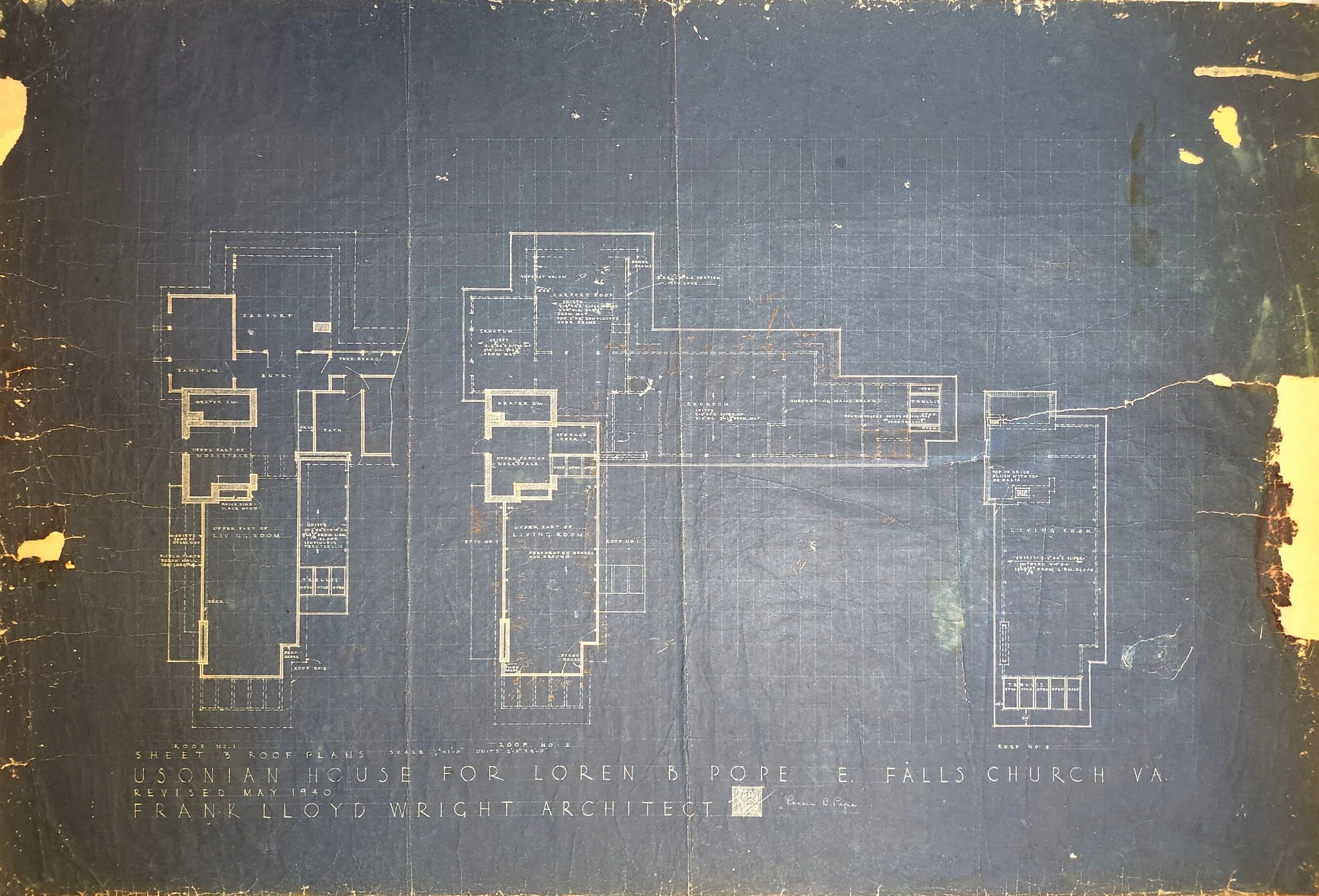Loren Pope
In the late 1930s, Loren Pope was a copy editor for the Washington Evening Star, earning $50 per week. He and his wife, Charlotte, owned a one and one-third acre plot of land in Falls Church, Virginia, where they planned to build a “picket-fenced Cape Cod style home.” Loren, known among his friends for having something of a rebel streak, was introduced to the work of Frank Lloyd Wright by a co-worker at the Star, who thought Wright’s modern style would appeal to Loren’s sensibilities. Initially skeptical, Loren fell in love with Wright’s design philosophy after reading Wright’s Autobiography in 1938.
After seeing Wright speak at a conference in Washington, D.C., Loren penned a six-page letter to the architect. “There are certain things that a man wants during life, and, of life. Material things and things of the spirit. The writer has one fervent wish that includes both. It is for a house designed by you.” In his letter, he included what he called “the problem,” a description of their lot in Falls Church and their budget of $5000. His letter referenced the first Jacobs House’s simple design and budget, which is now considered Wright’s first Usonian house.
Wright responded to Loren’s letter succinctly: “Dear Loren, Of course I am ready to give you a house.” Wright invited Loren to visit him at his Wisconsin studio, where the two sat together and planned what would be called the Loren Pope Residence. Construction of the home began in late 1939, overseen by Taliesin apprentice Gordon Chadwick. The Pope family moved into the home in 1941, and Loren later recalled that the overall cost of construction was between $7000 and $8000. Wright declined to accept Loren’s final payment to keep from going too far over the Pope family’s budget.
Original blueprints for Loren Pope. From the Woodlawn & Pope-Leighey House archives.
In need of space for their growing family and hoping to hire Wright to design a larger home, the Pope family sold the home to Robert and Marjorie Leighey in 1947. The Popes were unable to commission their second Wright home before their architect’s death. Later in life, Loren would become the education editor for The New York Times, and authored Colleges that Change Lives, which inspired a non-profit of the same name.
Explore Primary Sources
Click the image below to read firsthand accounts of life at Pope-Leighey House.




